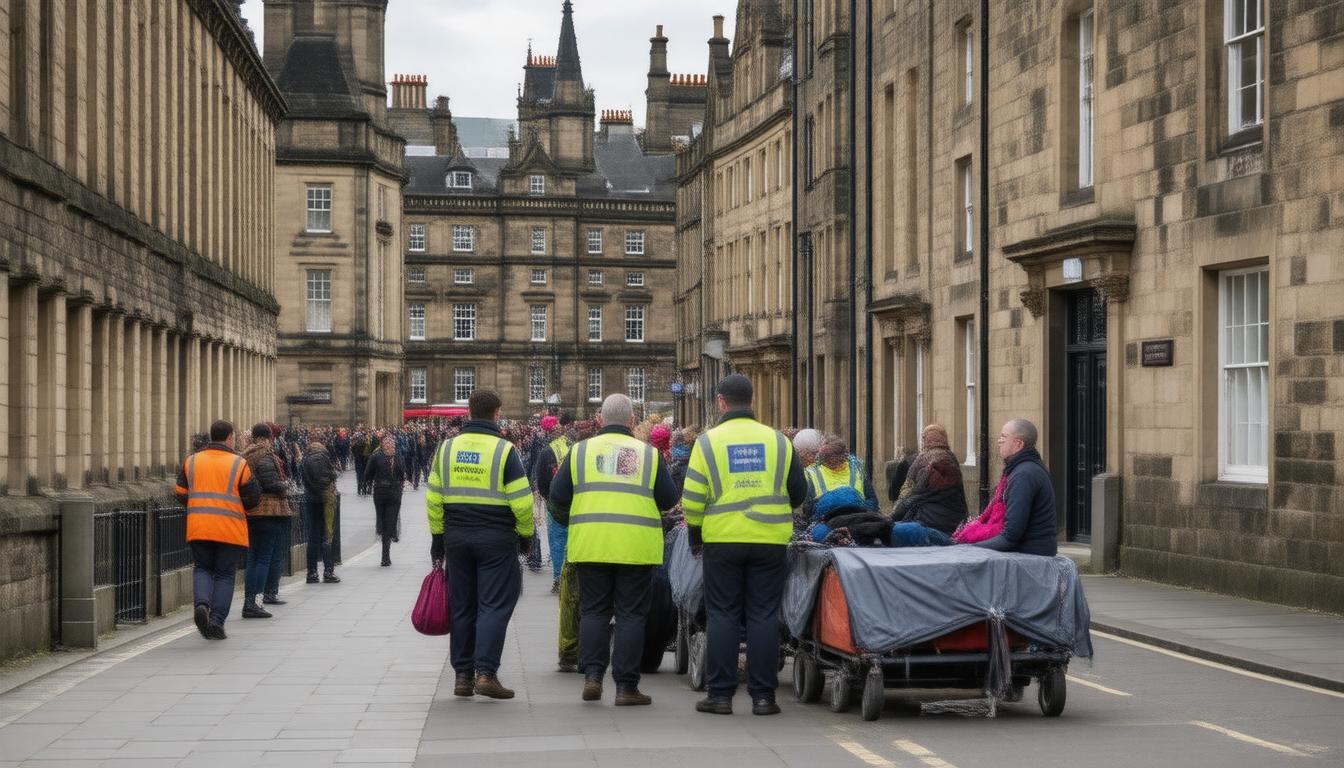As winter approaches, the City of Edinburgh Council has embarked on a pivotal initiative aimed at relocating hundreds of homeless individuals currently residing in unlicensed accommodations. This urgent action comes in response to the rising number of people in temporary housing, which has surged from 3,570 households in 2020 to over 5,000 in 2024—a direct consequence of the public health measures enacted during the Covid-19 pandemic. Alarmingly, more than 700 households are occupying 28 properties that do not meet required licensing standards for Houses in Multiple Occupancy (HMO), highlighting a critical need for compliance and safety in temporary housing (Edinburgh Council, 2024).
Key Takeaways
- Edinburgh Council is relocating homeless residents from unlicensed accommodations to comply with housing standards.
- The initiative responds to a significant rise in temporary housing needs since the Covid pandemic, increasing from 3,570 to over 5,000 households since
2020. - Council officials emphasize the importance of maintaining adequate living standards and legal compliance in homeless housing.
Current State of Homeless Accommodations in Edinburgh
The City of Edinburgh Council is undertaking urgent measures to improve the state of homeless accommodations in the city, particularly focusing on hundreds of individuals currently residing in unlicensed hotels and B&Bs. This scheme stems from a troubling rise in the volume of people seeking temporary housing—escalating from 3,570 households in 2020 at the height of the Covid-19 pandemic to over 5,000 households in
2024. Alarmingly, more than 700 of these households are housed in 28 properties that do not meet safety and licensing standards mandated for Houses in Multiple Occupancy (HMO) (Edinburgh Council, 2024).
As part of its initiative, the council has suspended new applications for homeless housing and non-urgent repairs to concentrate efforts on re-housing individuals from these non-compliant accommodations before early December. The decision was influenced by legal threats regarding funding non-compliant operators and the imperative to ensure that all temporary housing meets adequate living standards—a requirement currently unmet by many operators (BBC News, 2024).
Edinburgh Council officials acknowledge that the surge in temporary housing was initially a health measure during the pandemic. However, they are now facing challenges as many landlords have been sluggish in pursuing the necessary HMO licenses. To mitigate the situation, the council plans to reallocate resources aimed at bringing vacant properties back into operational use. Additionally, exceptions have been made for certain vulnerable groups, including disabled individuals and those awaiting hospital discharge, concerning new housing allocation until January
2025. This strategy underscores the council’s commitment to improving the living conditions and legal compliance of homeless accommodations throughout Edinburgh.
Council’s Actions and Future Plans for Relocation
The Edinburgh Council’s recent actions reflect a broader strategy to address homelessness while adhering to housing standards. This initiative comes as part of an urgent response to increased pressure on emergency accommodations, spurred by the ongoing ramifications of the pandemic, which have left many without stable housing options. As the council moves forward with this plan, they are re-evaluating their guidelines to ensure that the homeless population receives adequate support in compliance with housing laws. Furthermore, by focusing efforts on the most vulnerable segments of the population, the council aims to create a more inclusive approach that meets the needs of all Edinburgh residents. Collaboration with local housing charities and advocacy groups is anticipated in making these transitions smoother, fostering an environment where individuals can regain stability and improve their living circumstances (The Scotsman, 2024). With enforcement measures in place and community engagement on the rise, the council is hopeful that this initiative will lead to lasting improvements in the city’s approach to homelessness.





